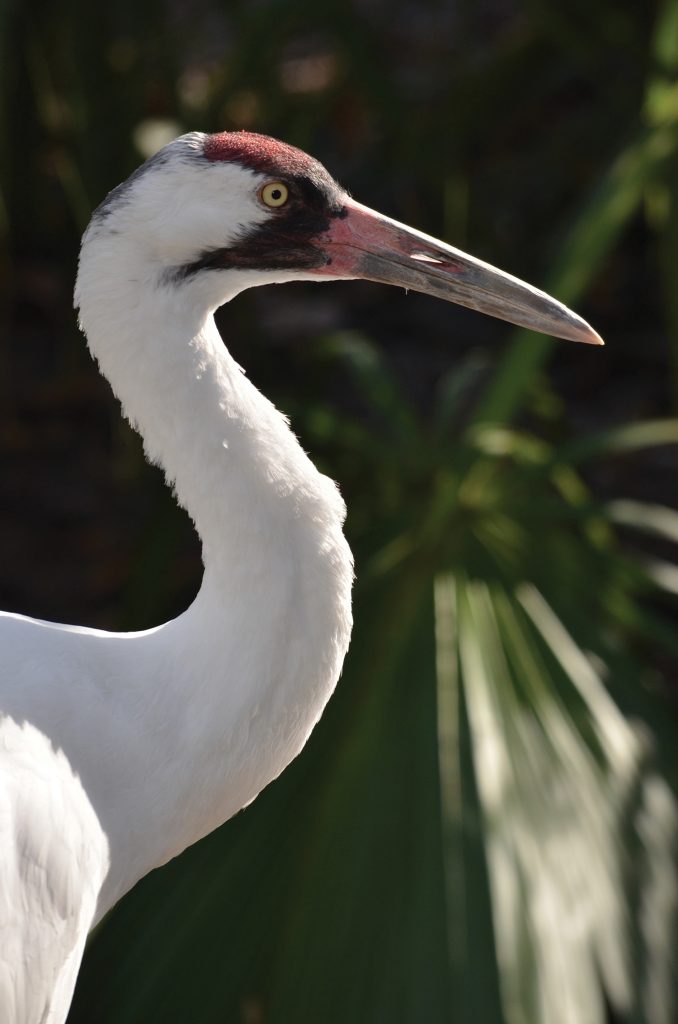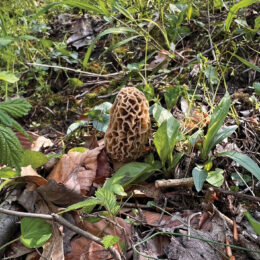Too often we view the colder months as a time to hunker down and avoid venturing outside. After all, many of our birds have headed south to warmer climates. Our Indiana reptiles and amphibians have retreated below the frost line. Mammals are difficult to observe in the best of times. Just what is there to see?
May I introduce you to the whooping crane — North America’s tallest bird, and one of the rarest. Fortunately for us Hoosiers, this amazing bird chooses the winter months to visit our state.
Standing nearly five feet tall, with a wingspan that can exceed seven feet, the whooping crane is a physically impressive bird. The adult’s pure white color, with eye-catching red skin on the head and cheeks, makes it difficult to miss. – George R. Sly
This is a species that has come back from the brink of extinction. By 1942, the entire population of whooping cranes consisted of around 20 birds. Habitat loss and unregulated hunting had taken its toll. The size of the whooping crane population was likely never huge; perhaps a few thousand at its peak. Today, because of conservation efforts, there are over 800.
Whooping cranes originally ranged over much of North America east of the Rockies. Reduced to the one small group previously noted, the cranes wintered near the Gulf Coast of Texas in what is now Aransas National Wildlife Refuge. In the summer, they migrated northward. The locality of their breeding grounds was unknown. Then, in 1954, the site was discovered in Alberta Canada’s Wood Buffalo National Park.
The vulnerability of the single, western population was of concern and an attempt was made to establish a nonmigratory population in Florida. This undertaking was unsuccessful and was replaced by a project to establish an eastern population that migrated between Wisconsin and Florida. This Eastern Migratory Population (EMP) currently numbers around 70 birds. The cranes initially learned their migration route by following an ultralight aircraft. Today, wild-hatched chicks, captives reared at the International Crane Foundation in Baraboo, Wisconsin and birds raised at partner organizations all have joined the population.
But guess what? Whooping cranes on their southward migration are arriving at Greene County’s Goose Pond Fish & Wildlife Area and staying! Finding the 9098-acre expanse of wetlands and prairies (and the thousands of acres of surrounding agricultural fields) to their liking, the whooping cranes are setting up camp here. This “short-stopping” cuts their migration journey from 1200 miles to only 500. At times, from October through March, nearly 25% of the EMP can be found on and around the property.
So, if you are looking for a cold-season wildlife adventure, head to Goose Pond FWA near Linton. Stop by the visitors center for assistance, and if you are lucky enough to spot a whooping crane or two, give yourself a pat on the back. You’ve just seen one of the world’s rarest birds.




